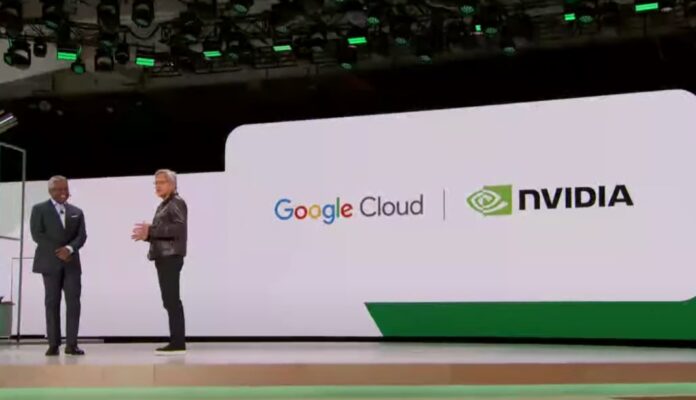The Google AI Cloud Strategy is taking a bold new turn, one that could reshape the entire artificial intelligence infrastructure landscape. With a colossal $93 billion investment, Google is betting big on custom-built chips designed to rival Nvidia’s dominance in the cloud computing market. This massive push centers around Ironwood, Google’s seventh-generation Tensor Processing Unit (TPU), which is already making waves across the tech industry.
Google AI Cloud Strategy Unveils Ironwood – Its Most Powerful AI Chip Yet
At the heart of the Google AI Cloud Strategy is Ironwood, the company’s most advanced in-house AI chip to date. Announced as part of Google’s broader AI infrastructure roadmap, Ironwood is reportedly over four times faster than its previous TPU generation.
Built entirely within Google’s engineering ecosystem, Ironwood is optimized for both training massive AI models and powering real-time generative AI tools, from chatbots to autonomous agents. The real breakthrough lies in scalability: Google says that up to 9,216 Ironwood TPUs can be linked in a single pod, virtually eliminating data bottlenecks for large-scale AI applications.
This architecture allows seamless performance for models requiring extreme computational capacity, an area where Google hopes to pull ahead of Nvidia’s GPU-based systems.
Massive Client Adoption Boosts Google’s Confidence
It’s not just the hardware that’s impressive, it’s who’s using it. AI startup Anthropic, the company behind Claude, plans to run up to 1 million Ironwood TPUs, showcasing just how much confidence the AI community has in Google’s hardware.
This partnership underscores a critical shift: Google’s AI infrastructure isn’t merely for internal projects like Gemini or Search Generative Experience, it’s now becoming a global service platform.
Anthropic’s large-scale adoption may serve as a catalyst for other enterprise-level clients to migrate from Nvidia’s GPUs to Google’s custom silicon, positioning Google as a formidable player in the AI hardware market.
Google AI Cloud Strategy Backed by $93 Billion Investment
To support this transformation, Google is raising its 2025 capital expenditure forecast from $85 billion to $93 billion. That’s an eye-watering figure, even by Big Tech standards.
The payoff? Google Cloud’s third-quarter revenue hit $15.15 billion, up 33% year-over-year. Even more impressive, Google has reportedly signed more billion-dollar cloud deals in the first nine months of 2025 than in the previous two years combined.
This surge reflects how integral Google Cloud has become to AI development globally. Its infrastructure now supports not just startups, but also Fortune 500 companies and research institutions, many of which depend on large-scale model training and data processing.
Taking on Nvidia: The Core of the Google AI Cloud Strategy
The Google AI Cloud Strategy isn’t about replacing Nvidia entirely, it’s about reducing dependency. Nvidia’s chips remain the gold standard for many AI applications, but their cost and availability have sparked growing frustration among cloud providers.
An Nvidia H100 GPU can cost upwards of $40,000, and high-end data centers require tens of thousands of them. For giants like Google, Amazon, and Microsoft, the math is simple: even small cost reductions per chip can result in billions of dollars in savings.
That’s why each major cloud provider is now building its own AI chip ecosystem:
-
Google has Ironwood (TPU v7).
-
Amazon develops Inferentia and Trainium through its Annapurna Labs division.
-
Microsoft introduced Maia 100, targeting both AI and traditional workloads.
-
Meta is designing its Meta Training and Inference Accelerator (MTIA).
This growing shift toward custom silicon reflects a new strategy: gain independence from Nvidia while optimizing for price, performance, and energy efficiency.
How Google’s Ironwood TPU Reinforces Its AI Cloud Strategy
What makes Ironwood unique is how it integrates into Google’s AI software ecosystem. Each chip is fine-tuned to work seamlessly with TensorFlow, JAX, and PyTorch, ensuring compatibility with the most widely used machine learning frameworks.
Additionally, Ironwood’s design reduces inter-chip communication latency, allowing massive AI models, such as multimodal large language models (LLMs), to process data faster and more efficiently than before.
This means Google can now offer enterprise customers a cost-effective, scalable, and faster AI infrastructure, giving it a critical competitive edge in the trillion-dollar cloud market.
Why Nvidia Should Be Concerned
While Nvidia continues to dominate AI hardware sales, the company faces a structural dilemma: its largest customers are now becoming its competitors. Google, Microsoft, and Amazon once relied almost entirely on Nvidia’s GPUs, but today, they’re actively reducing that dependency.
This doesn’t necessarily spell the end of Nvidia’s leadership, but it signals a redistribution of power within the AI industry. As each tech giant pushes its in-house chips into production, Nvidia risks losing a portion of its cloud provider clientele, even as demand from smaller AI startups remains strong.
Google AI Cloud Strategy and the Broader Industry Impact
The Google AI Cloud Strategy is about more than chips, it’s about redefining the foundation of the AI economy.
By owning the full stack, from hardware to software to cloud services, Google gains control over the entire value chain of artificial intelligence. This enables it to optimize efficiency, pricing, and scalability while keeping pace with Microsoft and Amazon in the global race for AI leadership.
Furthermore, Google’s continued investment signals a broader industry transformation. We’re moving toward a future where cloud providers are also chip manufacturers, merging infrastructure and innovation into one unified ecosystem.

A New Era for AI Infrastructure
With Ironwood’s debut, the Google AI Cloud Strategy is entering a defining phase. The company’s $93 billion gamble could very well pay off by reshaping how AI models are trained, deployed, and scaled.
If Google’s approach succeeds, it will no longer just be an AI software powerhouse, it will also be a hardware trailblazer, capable of challenging Nvidia’s long-standing supremacy.
The race for AI dominance has officially entered its next chapter, and this time, Google isn’t just competing; it’s rewriting the rulebook.


